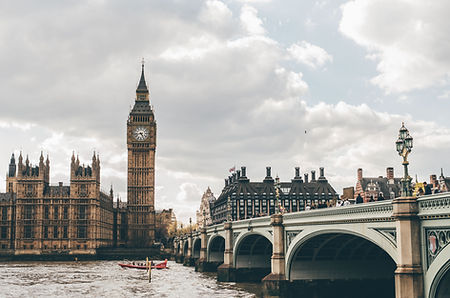
Early Adopter Cities
Taking a leading role in the project, closely collaborating with the Consortium to intensify the use of wood in both, urban core and surrounding municipalities.
What is an Early Adopter City?
To understand and overcome individual barriers implementing Build-in-Wood solutions, seven very different European cities have been selected as Early Adopter Cities. They range from capital metropoles to mid-size and small mountain cities, making one thing clear: Any city can decide to build in wood and benefit from it.
The Early Adopter Cities take a leading role in the project, receiving detailed context analyses, workshops and implementation support from the Consortium and Advisory Board. Their stories shall inspire cities around the world to rethink construction and social responsibility.

Brasov, Romania
Located in central Romania, ~160 km from the capital Bucharest, Brasov is nestled in the Southern Carpathians, an area rich in forests and other natural resources. The city grows fast, becoming one of Romania's biggest industrial and touristic hotspots.
Challenge: Increased demand for housing, renovations, need to decrease GHG-emissions
Build-in-Wood focus: strengthening of local wood value chain, developing strategies for wood use in multi-storey new builds and retrofits
Population: 290.000
We need to ensure the sustainable, inclusive and competitive development of our region. The Build-in-Wood project will help us to strengthen the value chain in the wood and construction industry by developing the local added value and capacity.
Dragoș David, General Director of Brasov Metropolitan Agency


Trento, Italy
Trento, Italy's greenest city and its region Trentino Alto Adige are home to the country’s most important cluster in the wood industry as well as a growing green economy cluster, hosting innovative companies active in the bioeconomy and renewable energy sectors.
Challenge: high-density urban area with increasing population growth, situated in a valley constrained by mountainous landscape
Build-in-Wood focus: Strengthening of local economy and urban-rural linkage, facilitating the cooperation between industry and administration, raising awareness to sustainability
Population: 118.000

Copenhagen, Denmark
The city of Copenhagen is one of the most sustainable and energy efficient cities in the world. The City aims to become the first carbon neutral capital city by 2025 and therefore invests in green transportation (bicycles are already the first choice for commuting) and sustainable construction (focus on timber construction).
Challenge: House the growing population, implement a new paradigm in the tender process, showcase benefits of wood construction (healthy, safe, climate-friendly, economic)
Build-in-Wood focus: Enhance regional knowledge, prioritize the use of wood in constructions as a sustainable solution
Population: 1.500.000 (Metropolitan area of Copenhagen)
Innsbruck, Austria
The outdoor sport destination Innsbruck is nestled between high mountains, leaving little space for the Tyrolean capital to expand. Since not only tourists and students seek it out, housing prices have significantly increased, exceeding even those of the capital Vienna.
Challenge: strongly populated urban area with houing need, outdated perception of timber as material for "wood cabins" not urban housing
Build-in-Wood focus: Densification, new stories on existing buildings, simplification of building codes, timber-positive tendering in public sector
Population: 130.000


Innsbruck is looking forward to collaborating with Build-in-Wood to create a new era of timber constructions while protecting our climate and strengthening Tyrolean economy.
Georg Willi, Mayor of Innsbruck
Amsterdam, Netherlands
The Metropolitan Region Amsterdam (MRA) is the country’s strongest economic region and home to over 14% of Dutch population. Amsterdam now focuses on climate neutrality and embraces circular economy. Through the collaboration with Build-in-Wood MRA wants to foster sustainable construction and intensify the use of wood as construction material.
Challenge: overcoming knowledge gap, accelerate wooden construction, lack of supporting and financial regulation
Build-in-Wood focus: policy development, timber-positive tendering, integral assessment of sustainablity on a systems level
Population: 2.500.000 (MRA)

© Robin Wood - ANA architecten and Marc Koehler Architects
Trondheim, Norway
Trondheim, Norway’s former capital city and technology hotspot is also known as a centre of excellence in sustainable urban development. The Trondheim region, Trøndelag accents the sustainable valorisation of natural resources, including measures for promoting the bioeconomy and circular economy.
Challenge: lack of expertise (on tall timber buildings), material sourcing / lack of local producers, timber building costs
Build-in-Wood focus: enhance personnel qualifications/trainings, re-use of building materials after end-of-life
Population: 200.000

Haringey, London, UK
Haringey is one of the 32 London local authority districts that constitute Greater London, being located in the Northern part of the city. Its population will increase with 8% by 2040, and approx. 15.920 new homes will be needed in the next ten years.
Challenge: ensuring carbon offsetting, circular economy principles & performance oriented heritage building refurbishment
Build-in-Wood focus: supporting a building in wood policy (stand-alone or supporting a larger embodied carbon policy)
Population: 260.000








